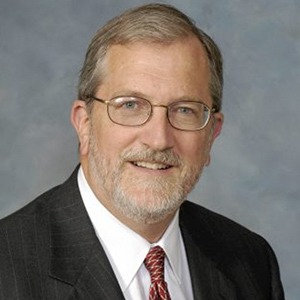WCOE: Challenges of Care Coordination in a Fragmented Health Care System
| What Caught Our Eye (WCOE) Each week, we take a closer look at the cancer policy articles, studies, and stories that caught our attention. |

“Our workflow needs to be structured to allow time for communication with each other, and our reimbursement system should recognize the value of this aspect of care.”
Several articles caught our eye this week about the complexities of our reimbursement system and the lack of incentives in our current system for the kind of care patients value and need – time with their physicians and help in coordinating their care among providers in a fragmented system.
Coordinating care for people with cancer and other complex, chronic conditions is a difficult process that is generally not reimbursed or rewarded by our current payment systems. In his article in The New York Times, “Medicare to Start Paying Doctors Who Coordinate Needs of Chronically Ill Patients,” Robert Pear describes how Medicare will take a step in the direction of paying for coordination of care beginning in 2015.
As Pear states in his article, the new service requires a comprehensive care plan and access to providers 24 hours a day, seven days a week to deal with urgent issues. It also allows for reimbursement of time for other members of the care team, besides physicians, who help with the coordination of care.
“As part of the new service, doctors will assess patients’ medical, psychological and social needs; check whether they are taking medications as prescribed; monitor the care provided by other doctors; and make arrangements to ensure a smooth transition when patients move from a hospital to their home or to a nursing home,” Pear writes.
Last year the Centers for Medicare and Medicaid Services (CMS) announced its intention to begin paying for complex care management in 2015. In comments we submitted last September, we praised CMS for the introduction of the chronic care management service and made recommendations to ensure that the chronic care management service met the needs of cancer patients.
Pear refers to a recent article in the New England Journal of Medicine, “Instant Replay — A Quarterback’s View of Care Coordination,” by Dr. Matthew J. Press, in which he describes the series of steps he took over an 80-day period to coordinate the care of a patient with liver cancer. During that 80-day period, there were 12 clinicians involved, 40 communications between Dr. Press and other clinicians, 12 communications with the patient and/or his wife, five procedures, and 11 office visits. A fascinating but troubling animation illustrates the complexity of the care coordination.
Dr. Press discusses some lessons learned about the urgent need for care coordination, not just as a means of providing high-quality care, but as an essential component of patient safety. He stressed the importance of teamwork and relationships. And while a nurse navigator or other member of the care team could handle many of the tasks of care coordination, he asserts that there were some crucial interactions that had to be physician to physician.
As a clinician-researcher at an academic medical center, Dr. Press was able to spend the time coordinating the care of this patient, without reimbursement, but many in other clinical settings cannot. “Our workflow needs to be structured to allow time for communication with each other, and our reimbursement system should recognize the value of this aspect of care. I was able to play the role I did in Mr. K.’s care largely because, as a clinician-researcher, I had a patient panel about one tenth the size of the average primary care panel. The goal should be to make coordination and collaboration feasible for full-time clinicians, too,” Press writes.
“Fischer did not receive a single dollar. And the story of why turns out to get right at the heart of how American medicine remains so costly, inefficient and dysfunctional – even after years of debate and the large-scale reforms contemplated by Obamacare,” Jennings writes.
She goes on to explain the work of the American Medical Association’s Specialty Society Relative Value Scale Update Committee, or “RUC” to advise CMS as to the level of effort physicians spend on tasks and procedures and how much Medicare should reimburse for these services. The valuations recommended by the RUC have put higher value, and therefore reimbursement, on procedures and care by specialists, and less value on the work of primary care physicians or on the care management and coordination that happens outside of face-to-face time with patients.
“Called ‘Current Procedural Terminology,’ the coding system has numbers to delineate everything from a standard office visit to a complicated triple bypass surgery. But it does not include codes for much of the ongoing work that primary care doctors perform outside of scheduled office visits. In other words, invaluable work like that which Fischer did for [his patient],” Jennings writes.
Dr. Jauhar also writes about financial pressures on physicians in our fee-for-service system and the influence of money in the practice of medicine.“In his telling, being a caring doctor has become practically cost-prohibitive. Insurance companies don’t pay enough for spending time with patients. But they do for CT scans and stress tests — whether they’re warranted or not,” writes Meadows in her review.
| Post by Shelley Fuld Nasso. Connect with Shelley on Twitter @sfuldnasso. |





